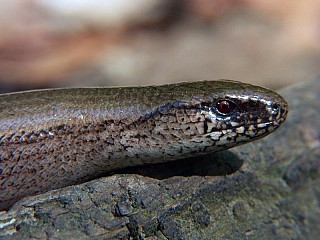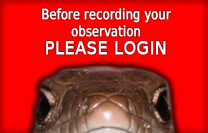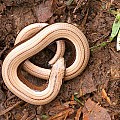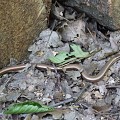
The SLOW WORM's body is snake-like, without legs. Head smaller and less flattened than in snakes, and lacking defined neck. Tail end rounded. Total length up to 50 cm. Eyes small with movable eyelids. Scales smooth and shiny. Dorsal colour variable, light or dark brown, silvery, pinkish, or often coppery; females and juveniles frequently have a dark vertebral stripe. Flanks are of similar colour but lighter in males, and darker in females. Ventral side grey, sometimes almost black. In Eastern Hungary A. colhica occurs where – especially in males –the back has bright blue spots. Back of juveniles usually yellowish-white, or gold, sides and belly black.
Distibution map by our National Herpetological Mapping Program:



















